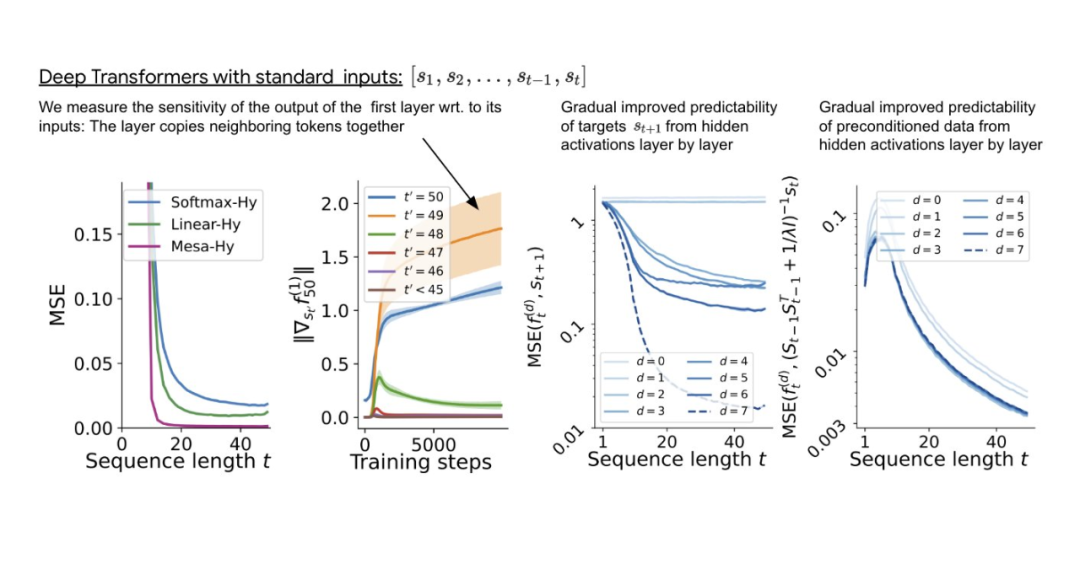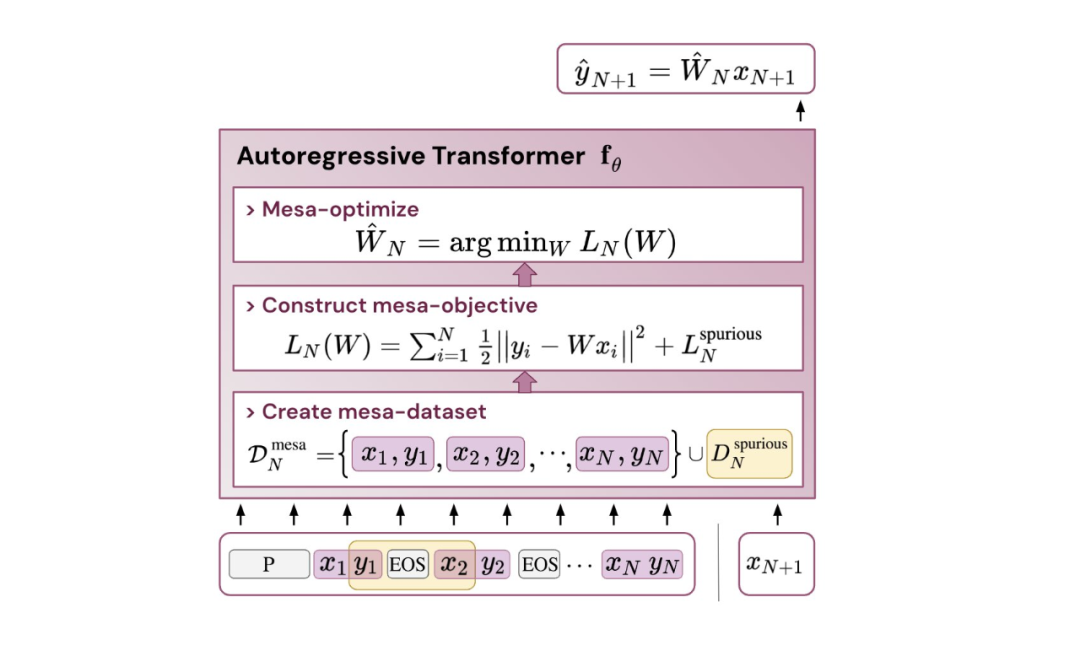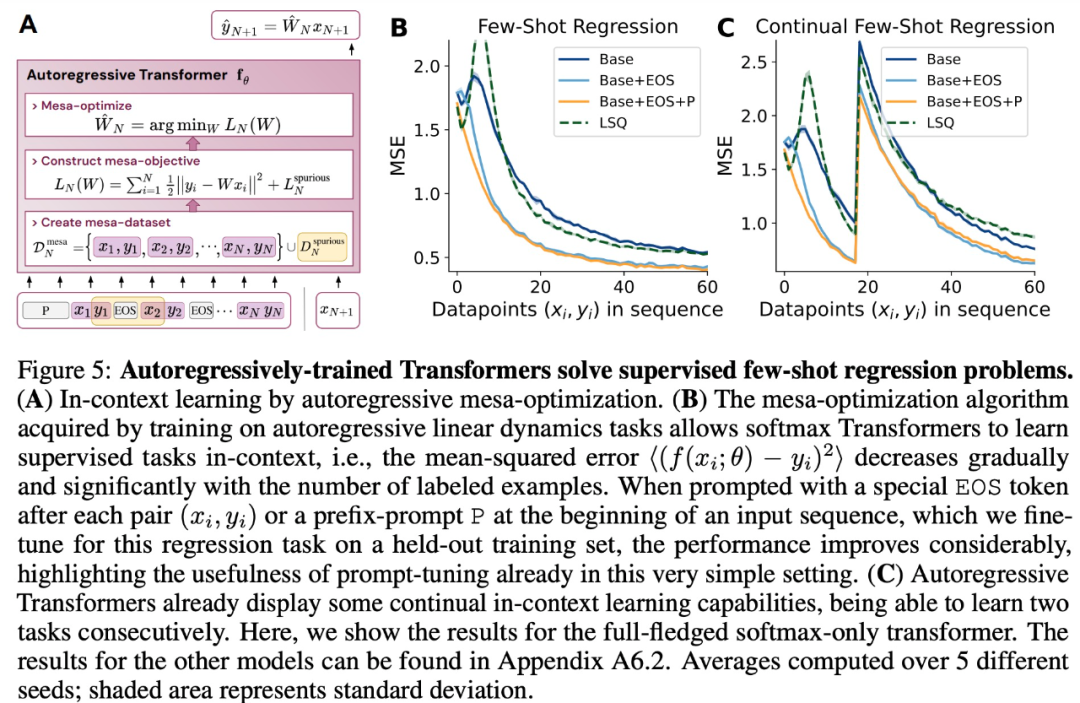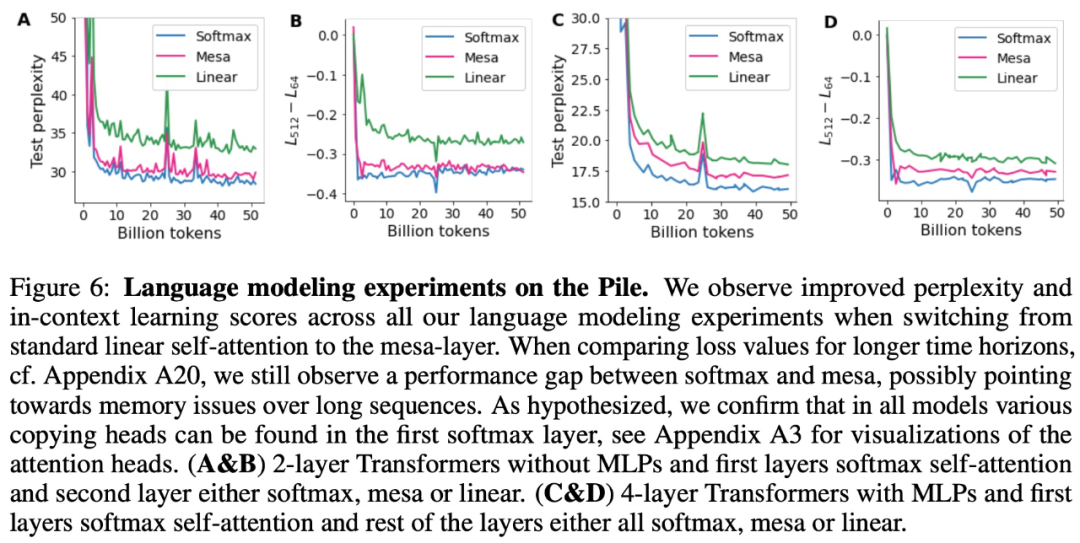Why does transformer perform so well? Where does the In-Context Learning capability it brings to many large language models come from? In the field of artificial intelligence, transformer has become the dominant model in deep learning, but the theoretical basis for its excellent performance has been insufficiently studied. Recently, new research from researchers at Google AI, ETH Zurich, and Google DeepMind has attempted to reveal the answer to the mystery. In new research, they reverse-engineered the transformer and found some optimization methods. Paper "Uncovering mesa-optimization algorithms in Transformers":  Paper link: https://arxiv.org/abs/2309.05858 Author Show that minimizing the general autoregressive loss results in an auxiliary gradient-based optimization algorithm operating in the forward pass of the Transformer. This phenomenon has recently been called "mesa-optimization." Furthermore, the researchers found that the resulting mesa optimization algorithm exhibited contextual small-shot learning capabilities, independent of model size. The new results therefore complement the principles of small-shot learning that have emerged previously in large language models. The researchers believe that the success of Transformers is based on its architectural bias in implementing the mesa optimization algorithm in the forward pass: (i) defining internal learning goals, and (ii) It is optimized.
Paper link: https://arxiv.org/abs/2309.05858 Author Show that minimizing the general autoregressive loss results in an auxiliary gradient-based optimization algorithm operating in the forward pass of the Transformer. This phenomenon has recently been called "mesa-optimization." Furthermore, the researchers found that the resulting mesa optimization algorithm exhibited contextual small-shot learning capabilities, independent of model size. The new results therefore complement the principles of small-shot learning that have emerged previously in large language models. The researchers believe that the success of Transformers is based on its architectural bias in implementing the mesa optimization algorithm in the forward pass: (i) defining internal learning goals, and (ii) It is optimized. 
## Figure 1: Illustration of the new hypothesis: optimizing the weight θ of the autoregressive Transformer fθ will produce the mesa optimization algorithm implemented in the forward propagation of the model . As input sequence s_1, . . . , s_t is processed to time step t, Transformer (i) creates an internal training set consisting of input-target association pairs, (ii) defines an internal objective function through the result dataset, which is used to measure the performance of the internal model using weights W, (iii) Optimize this objective and use the learned model to generate future predictions. 
Contributions of this study include:
- Summary von Oswald et al., and show how Transformers can theoretically predict the next element of a sequence from regression by optimizing an internally constructed objective using gradient-based methods.
- Experimentally reverse engineered Transformers trained on a simple sequence modeling task and found strong evidence that their forward pass implements a two-step algorithm: (i ) Early self-attention layers build an internal training dataset by grouping and copying labels, thus implicitly building an internal training dataset. Define internal objective functions and (ii) optimize these objectives at a deeper level to generate predictions.
- Similar to LLM, experiments show that simple autoregressive training models can also become contextual learners, and on-the-fly adjustments are crucial to improve LLM's contextual learning and can also improve performance in specific environments. Performance.
- Inspired by the discovery that the attention layer attempts to implicitly optimize the internal objective function, the author introduces the mesa layer, which is a new type of attention layer that can effectively solve the least squares optimization problem rather than just taking a single gradient step to achieve optimality. Experiments demonstrate that a single mesa layer outperforms deep linear and softmax self-attention Transformers on simple sequential tasks while providing more interpretability.

- After preliminary language modeling experiments, it was found that replacing the standard self-attention layer with the mesa layer obtained effective The promising results prove that this layer has strong contextual learning capabilities.
#Based on recent work showing that transformers explicitly trained to solve small-shot tasks in context can implement gradient descent (GD) algorithms. Here, the authors show that these results generalize to autoregressive sequence modeling—a typical approach to training LLMs.
First analyze transformers trained on simple linear dynamics, where each sequence is generated by a different W* - to prevent cross-sequence memorization. In this simple setup, the authors demonstrate a transformer that creates a mesa dataset and then uses preprocessed GD to optimize the mesa objective.
 This study trains a deep transformer on a token structure that aggregates adjacent sequence elements. Interestingly, this simple preprocessing results in an extremely sparse weight matrix (less than 1% of the weights are non-zero), resulting in a reverse-engineered algorithm.
This study trains a deep transformer on a token structure that aggregates adjacent sequence elements. Interestingly, this simple preprocessing results in an extremely sparse weight matrix (less than 1% of the weights are non-zero), resulting in a reverse-engineered algorithm.

For single-layer linear self-attention, the weight corresponds to one GD step. For deep transformers, interpretability becomes difficult. This study relies on linear probing and examines whether latent activations predict autoregressive targets or preprocessed inputs. Interestingly, the predictability of both detection methods gradually improves with increasing network depth. This finding suggests that preprocessed GD is hidden in the model. 
The study found that the training layer can be perfectly fitted when all degrees of freedom are used in the construction, including not only the learned learning rate eta, Also included is a set of learned initial weights W_0. Importantly, as shown in Figure 2, the learned one-step algorithm still performs far better than a single mesa layer. We can notice that under simple weight settings, it is easy to find through basic optimization that this layer can optimally solve the tasks studied here. This result demonstrates the advantage of hard-coded inductive biases in favor of mesa optimization. #With theoretical insights into the multi-layer case, first analyze deep linear and softmax focusing only on Transformer. The authors format the input according to a 4-channel structure,  , which corresponds to the choice of W_0 = 0. As with the single-layer model, the authors see clear structure in the weights of the trained model. As a first reverse engineering analysis, this study exploits this structure and builds an algorithm (RevAlg-d, where d represents the number of layers) containing 16 parameters per layer header (instead of 3200). The authors found that this compressed but complex expression can describe the trained model. In particular, it allows interpolation between actual Transformer and RevAlg-d weights in an almost lossless manner. While the RevAlg-d expression explains a trained multi-layer Transformer with a small number of free parameters, it is difficult to interpret it as a mesa optimization algorithm. Therefore, the authors employed linear regression probing analysis (Alain & Bengio, 2017; Akyürek et al., 2023) to find the characteristics of the hypothesized mesa optimization algorithm. On the deep linear self-attention Transformer shown in Figure 3, we can see that both probes can be linearly decoded, and the decoding performance varies with the sequence length and network Increases with increasing depth. Therefore, base optimization discovers a hybrid algorithm that descends layer by layer on the original mesa-objective Lt (W) while improving the condition number of the mesa optimization problem. This results in a rapid decrease in mesa-objective Lt (W). It can also be seen that performance improves significantly with increasing depth. It can therefore be considered that the rapid decline of autoregressive mesa-objective Lt (W) is achieved by stepwise (cross-layer) mesa optimization on better preprocessed data .
, which corresponds to the choice of W_0 = 0. As with the single-layer model, the authors see clear structure in the weights of the trained model. As a first reverse engineering analysis, this study exploits this structure and builds an algorithm (RevAlg-d, where d represents the number of layers) containing 16 parameters per layer header (instead of 3200). The authors found that this compressed but complex expression can describe the trained model. In particular, it allows interpolation between actual Transformer and RevAlg-d weights in an almost lossless manner. While the RevAlg-d expression explains a trained multi-layer Transformer with a small number of free parameters, it is difficult to interpret it as a mesa optimization algorithm. Therefore, the authors employed linear regression probing analysis (Alain & Bengio, 2017; Akyürek et al., 2023) to find the characteristics of the hypothesized mesa optimization algorithm. On the deep linear self-attention Transformer shown in Figure 3, we can see that both probes can be linearly decoded, and the decoding performance varies with the sequence length and network Increases with increasing depth. Therefore, base optimization discovers a hybrid algorithm that descends layer by layer on the original mesa-objective Lt (W) while improving the condition number of the mesa optimization problem. This results in a rapid decrease in mesa-objective Lt (W). It can also be seen that performance improves significantly with increasing depth. It can therefore be considered that the rapid decline of autoregressive mesa-objective Lt (W) is achieved by stepwise (cross-layer) mesa optimization on better preprocessed data .  图 3: Multi -layer transformer training for reverse engineering built inputs built.
图 3: Multi -layer transformer training for reverse engineering built inputs built.
This shows that if the transformer is trained on the built tokens, it will predict with mesa optimization. Interestingly, when sequence elements are given directly, the transformer will construct the token by itself by grouping the elements, which the research team calls "creating the mesa dataset".  in conclusion
in conclusion
This study shows that the Transformer model is capable of developing gradient-based inference algorithms when trained on a sequence prediction task under a standard autoregressive objective. Therefore, state-of-the-art results obtained in multi-task, meta-learning settings can also be transferred to traditional self-supervised LLM training settings. Additionally, the study found that learned autoregressive inference algorithms can be repurposed to solve supervised contextual learning tasks without retraining, thereby Interpret results within a single unified framework. 
So, what does this have to do with in-context learning? The study believes that after training the transformer on the autoregressive sequence task, it achieves appropriate mesa optimization and therefore can perform few-shot context learning without any fine-tuning. 
This study assumes that mesa optimization also exists for LLM, thereby improving its contextual learning capabilities. Interestingly, the study also observed that effectively adapting prompts for LLM can also lead to substantial improvements in contextual learning capabilities. 

Interested readers can read the original text of the paper to learn more about the research content. https://www.reddit. com/r/MachineLearning/comments/16jc2su/r_uncovering_mesaoptimization_algorithms_in/https://twitter.com/oswaldjoh/status/1701873029100241241The above is the detailed content of With a theoretical foundation, we can carry out in-depth optimization.. For more information, please follow other related articles on the PHP Chinese website!

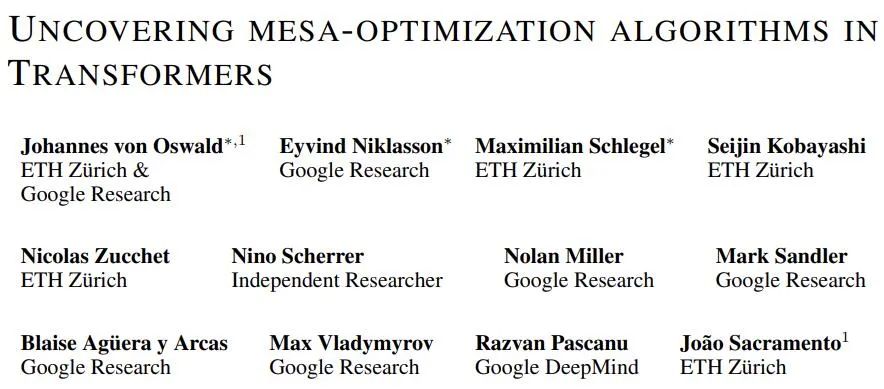
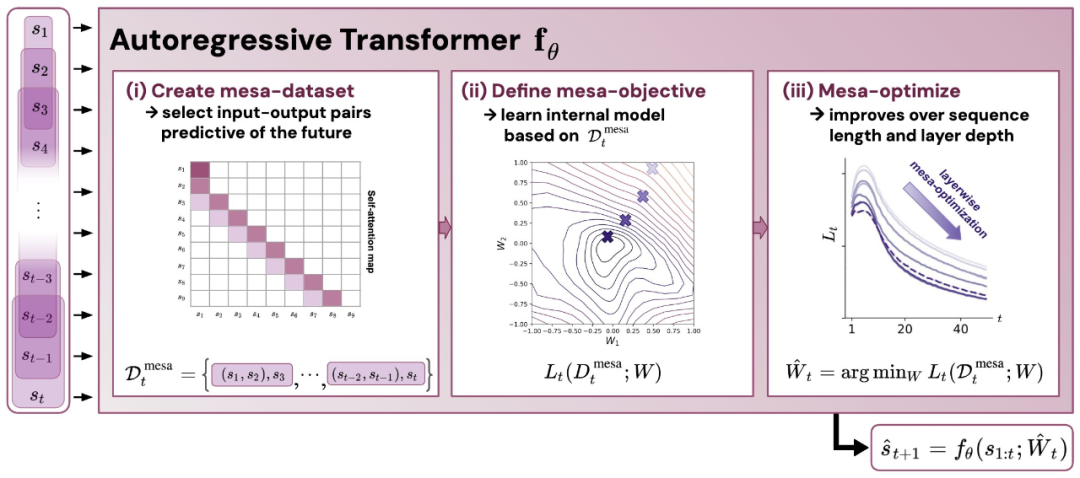
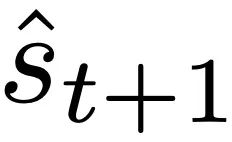
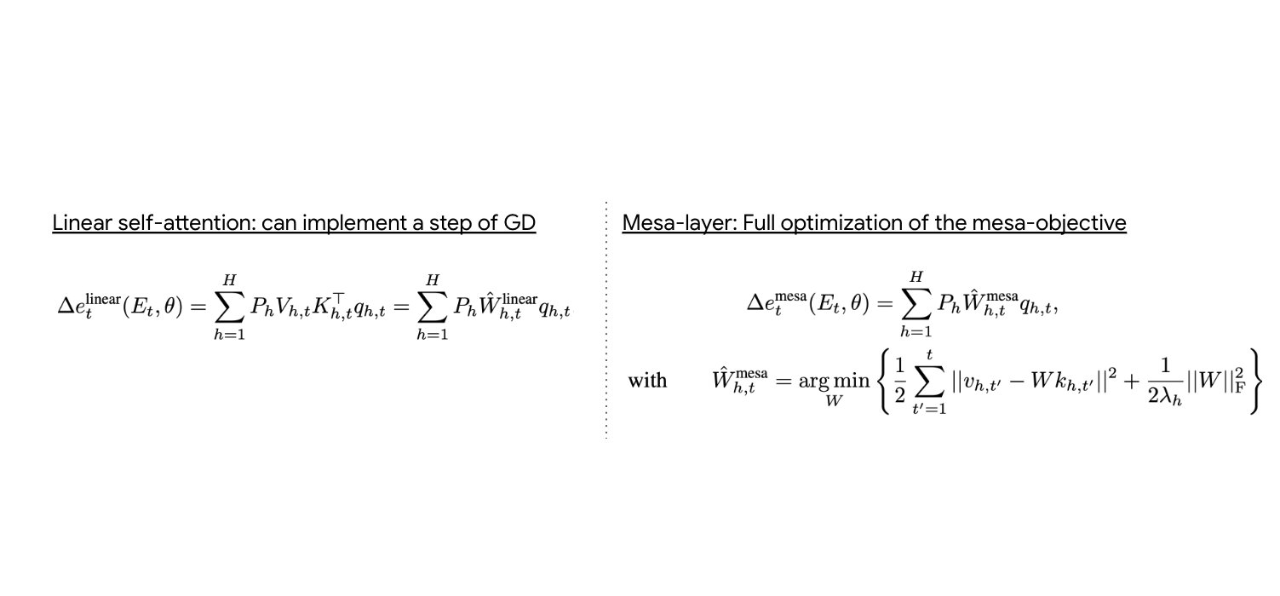

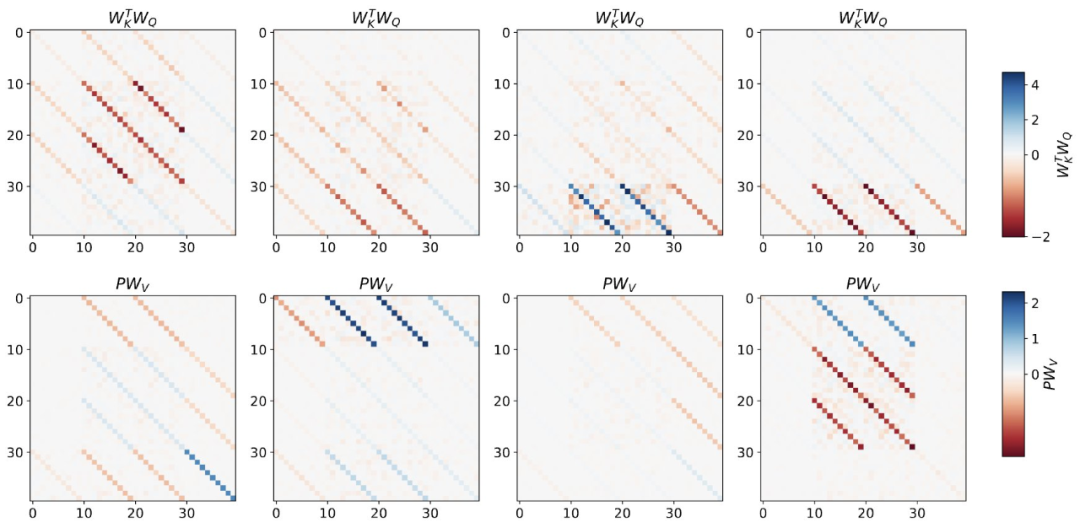

 , which corresponds to the choice of W_0 = 0.
, which corresponds to the choice of W_0 = 0.  图 3: Multi -layer transformer training for reverse engineering built inputs built.
图 3: Multi -layer transformer training for reverse engineering built inputs built. 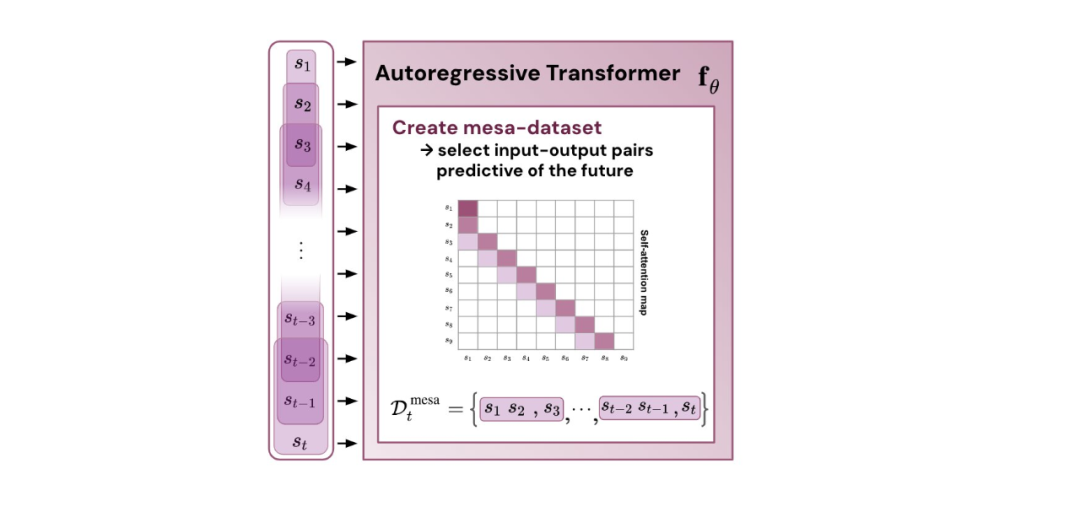 in conclusion
in conclusion